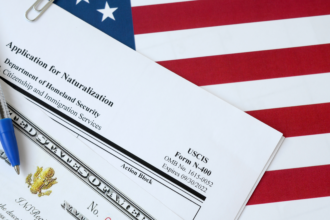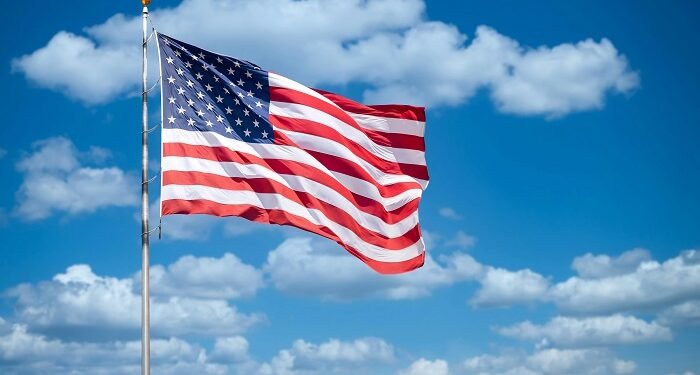The M-1 visa is specifically designed for students who wish to pursue non-academic or vocational studies in the United States. Nigerian students looking to enhance their skills in fields like aviation, culinary arts, technical training, or cosmetology can benefit from this visa category. Understanding the M-1 visa application process is essential for ensuring a successful application and smooth transition to studying in the U.S.
This detailed guide explains the eligibility requirements, application process, necessary documents, and tips for Nigerian vocational students applying for the M-1 visa.
What Is the U.S. M-1 Visa?
The M-1 visa allows international students to enroll in vocational or technical programs at approved U.S. institutions. Unlike the F-1 visa, which is for academic students, the M-1 visa focuses on practical training and hands-on experience.
Key Features of the M-1 Visa
- Purpose: Non-academic or vocational training.
- Program Types: Courses in fields such as mechanics, culinary arts, aviation, and beauty services.
- Duration: Valid for the length of the vocational program (up to one year), with possible extensions.
- Work Restrictions: Limited to practical training directly related to the program.
Eligibility Requirements for the M-1 Visa
To qualify for the M-1 visa, Nigerian applicants must meet the following criteria:
1. Enrollment in an Approved Program
Applicants must be accepted into a vocational or technical school in the U.S. that is certified by the Student and Exchange Visitor Program (SEVP).
2. Proof of Non-Immigrant Intent
Applicants must demonstrate their intention to return to Nigeria after completing their program. This is typically done by providing evidence of strong ties to their home country, such as:
- Family relationships.
- Property ownership.
- A job offer in Nigeria.
3. Financial Stability
Applicants must prove they have sufficient funds to cover tuition, living expenses, and other costs for the duration of their stay in the U.S.
4. Academic and Language Proficiency
While academic qualifications may not be as stringent as for the F-1 visa, some programs may require basic educational credentials or proficiency in English.
Step-by-Step Application Process
Step 1: Apply to an SEVP-Certified School
Before applying for the M-1 visa, Nigerian students must gain acceptance into a vocational program at an SEVP-certified institution.
How to Find SEVP-Certified Schools:
- Visit the SEVP school search tool to find eligible institutions.
What to Expect:
- Submit an application to your chosen school, along with transcripts and other required documents.
- Upon acceptance, the school will issue a Form I-20 (Certificate of Eligibility for Nonimmigrant Student Status).
Step 2: Pay the SEVIS Fee
After receiving the Form I-20, applicants must pay the Student and Exchange Visitor Information System (SEVIS) fee.
- Payment: Pay the SEVIS fee online through the FMJFee website.
- Cost: $350 (as of 2024).
- Proof of Payment: Print and save the payment confirmation receipt, as it will be required during the visa application process.
Step 3: Complete the DS-160 Form
The DS-160 is the primary application form for all U.S. non-immigrant visas.
- Where to Apply: Complete the form online at the Consular Electronic Application Center (CEAC).
- Important Tips:
- Fill out the form accurately.
- Upload a recent passport-sized photograph that meets U.S. visa photo requirements.
Step 4: Pay the Visa Application Fee
The M-1 visa application fee is $185 (as of 2024). Payment can be made at designated banks in Nigeria or online, depending on the U.S. Embassy’s procedures.
Step 5: Schedule a Visa Interview
Applicants must schedule an interview at the U.S. Embassy in Nigeria (Abuja or Lagos).
How to Schedule:
- Create an account on the CGI Federal website.
- Choose a convenient date and time for the interview.
Documents Required for the M-1 Visa Application
Applicants must bring the following documents to their visa interview:
- Valid Passport: Must be valid for at least six months beyond the intended stay.
- Form I-20: Issued by the SEVP-certified school.
- DS-160 Confirmation Page: Proof of completed visa application form.
- SEVIS Fee Payment Receipt.
- Visa Application Fee Receipt.
- Photograph: Passport-sized, meeting U.S. visa photo standards.
- Proof of Financial Support: Bank statements, scholarship letters, or sponsor affidavits.
- Academic Documents: Transcripts, diplomas, and certificates from previous studies.
- Proof of Non-Immigrant Intent: Documents showing ties to Nigeria.
- Additional Supporting Documents: Any other documents requested by the consular officer.
Tips for a Successful Visa Interview
The visa interview is a crucial step in the application process. Nigerian students can improve their chances of success by following these tips:
1. Be Honest and Confident
- Clearly explain why you chose your program and school.
- Provide concise answers about your plans to return to Nigeria after completing your studies.
2. Demonstrate Financial Stability
- Show proof of funds that can cover tuition, living expenses, and travel costs.
3. Highlight Ties to Nigeria
- Emphasize family, career, or property ties that will motivate you to return home.
4. Prepare for Common Questions
Examples of questions include:
- Why did you choose this specific vocational program?
- How will this program help you in your career?
- Who is sponsoring your education?
Restrictions and Limitations of the M-1 Visa
While the M-1 visa offers valuable opportunities, it comes with certain restrictions:
- Limited Work Authorization
- On-campus employment is not allowed.
- Off-campus employment is only permitted as part of practical training and requires approval.
- No Pathway to Permanent Residency
The M-1 visa is strictly for temporary vocational training and does not offer a direct pathway to green card eligibility. - Fixed Duration
The visa is valid for the length of the program, plus 30 days for travel. Extensions are available only in specific cases.
Transitioning to Practical Training
Upon completing their program, M-1 visa holders may apply for Practical Training, allowing them to gain work experience directly related to their field of study.
Steps to Apply for Practical Training:
- Obtain a recommendation from your school’s Designated School Official (DSO).
- Submit Form I-765 (Application for Employment Authorization) to U.S. Citizenship and Immigration Services (USCIS).
- Pay the application fee ($410 as of 2024).
- Await approval and the issuance of an Employment Authorization Document (EAD).
Useful Resources
- U.S. Embassy in Nigeria: Official website for visa appointments and updates.
- SEVP School Search Tool: Find SEVP-certified schools.
- FMJFee Website: Pay the SEVIS fee.
- U.S. Citizenship and Immigration Services (USCIS): Information on Practical Training and Form I-765.
Conclusion
The M-1 visa opens doors for Nigerian vocational students to gain specialized training and skills in the United States. By carefully preparing for the application process, gathering the necessary documents, and demonstrating genuine intent, applicants can enhance their chances of success.
As vocational and technical training becomes increasingly valuable in today’s global economy, the M-1 visa provides a unique opportunity for Nigerian students to develop expertise that can significantly benefit their careers and communities.
Stay informed by visiting official resources and seeking guidance from credible organizations to ensure a smooth application process and a rewarding educational experience in the U.S.



